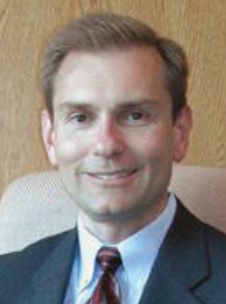Back to the Future!
Edward P. Salek, CAE, Executive Director | TLT Headquarters Report May 2012
Workforce training issues return as business improves.

Through STLE University, we’ve created an entirely new content-delivery system to educate and attract young people into our industry.
ABOUT FIVE YEARS AGO, DEMOGRAPHIC ISSUES AND WORKFORCE TRAINING were two of the hottest issues on the STLE organizational dashboard. Members were concerned about the coming impact of a Baby Boomer-retirement “brain drain” to begin in about 2010 and continue until 2020. Individual companies and STLE as an organization wrestled with questions such as: Who will train replacements? How do we attract new talent to our profession?
When the global economy collapsed in the fall of 2008, workforce demographics tumbled from the top spot on the list of things keeping people awake at night. Survival and recovery strategies, both for individuals and organizations, quickly became the primary and overriding concern.
However, as we head into the middle of 2012 and the overall economy seems to be improving, there are signs that workforce training and development is re-emerging as an issue for the tribology and lubricants industry and its customers. The evidence of this trend is both anecdotal and statistical.
On the anecdotal side of things, I recently had an extended conversation with an STLE corporate member representative for a major industrial company about his organization’s looming shortage of trained scientists, engineers and technologists. Two related factors are influencing this situation. One is the steady march of Baby Boomers toward retirement and the other is the fact that there is not a pool of mid-career folks with highly specialized skills waiting to step into the vacant slots.
On a more macroscale, consider the findings reported by The Manufacturing Institute (an affiliate of the National Association of Manufacturers) based on a survey of 1,123 executives in 2011. It estimated that 600,000 manufacturing jobs are going unfilled nationwide. Of more specific interest to the STLE community:
•
50% of those questioned report a serious or moderate shortage of scientists and engineers currently. That number jumps to 71% beginning in 2015.
•
For engineering technologists, the comparable percentages are 60% reporting a shortage currently and 81% by 2015.
As an organization with an education and training mission, this situation presents both a challenge and an opportunity for STLE to serve the tribology and lubricants community and its diverse group of customers. Fortunately, STLE’s current strategic plan emphasizes the society’s role as a source of fundamental knowledge about proper lubrication practices.
Based on this segment of the plan, STLE’s Board of Directors in early 2010 approved the initiative that’s grown into what’s now known as STLE University. By investing in this program for several years, we have been able to expand and improve existing educational offerings in traditional venues such as the STLE Annual Meeting and local sections. In addition, we have created an entirely new content-delivery channel for technical training and education through the STLE monthly Webinar series and online self-study courses.
This blended approach is having the intended effect of expanding the audience for STLE education. In 2011 we reached 604 students at live sessions (not including section lube schools) and 643 students through Webinars and online courses. While there is some overlap between the two formats, the vast majority of these 1,247 individuals appear on only one list.
The next phase in the development process will allow for greater content integration between the various forms of STLE education. The goal is to create a keyword searchable database that will provide the user with a menu of print, digital and live options for learning more about a technical subject or technology that’s of interest and value to them and their organization. Watch for more on this project in the fall.
This emphasis on continuing professional education puts STLE programming in alignment with marketplace needs. This, in turn, is another step toward supporting our organization’s broad mission: “To advance the science of tribology and the practice of lubrication engineering in order to foster innovation, improve the performance of equipment and products, conserve resources and protect the environment.”
 You can reach Certified Association Executive Ed Salek at esalek@stle.org
You can reach Certified Association Executive Ed Salek at esalek@stle.org.